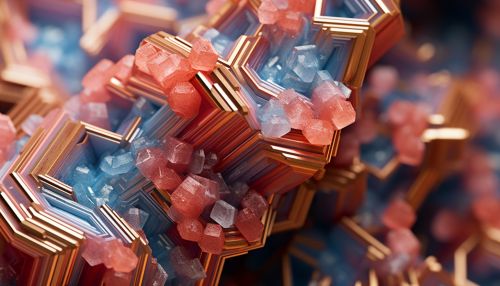Magnetocaloric Effect and Magnetic Refrigeration
Introduction
The Magnetocaloric effect (MCE) is a phenomenon where a material changes temperature in response to a change in the magnetic field. This effect is directly related to the concept of magnetic refrigeration, a cooling technology that utilizes magnetic fields instead of gases to cool below ambient temperature.
Magnetocaloric Effect
The magnetocaloric effect was first discovered in the early 20th century by a German physicist named Warburg. The effect is observed in magnetic materials when they are subjected to a changing magnetic field. The change in magnetic field causes the magnetic moments of the material to align, which in turn changes the material's temperature.
Mechanism of Action
The magnetocaloric effect is a result of the alignment of magnetic moments within a material. When a magnetic field is applied to a magnetic material, the magnetic moments of the material align in the direction of the field. This alignment is a form of order, and as such, it reduces the material's entropy. According to the second law of thermodynamics, a decrease in entropy is accompanied by a decrease in temperature.


Materials Exhibiting the Magnetocaloric Effect
Various types of materials exhibit the magnetocaloric effect, including certain types of metals and alloys. Some of the most effective materials for exhibiting the magnetocaloric effect are those that undergo a magnetic phase transition near the temperature of interest. These materials include gadolinium and its alloys, as well as certain types of rare earth elements and their alloys.
Magnetic Refrigeration
Magnetic refrigeration is a cooling technology that uses the magnetocaloric effect to cool below ambient temperature. It is an environmentally friendly alternative to traditional refrigeration methods, as it does not use harmful gases or cause ozone depletion.
Principle of Operation
The principle of operation of a magnetic refrigerator is based on the magnetocaloric effect. A magnetic field is applied to a magnetocaloric material, causing it to heat up. The material is then cooled to its initial temperature by a fluid, usually water. When the magnetic field is removed, the material cools down below its initial temperature, thus providing cooling.
Advantages and Disadvantages
Magnetic refrigeration has several advantages over traditional refrigeration methods. It is more energy-efficient, as it does not require the compression and expansion of gases. It is also environmentally friendly, as it does not use harmful refrigerants. However, magnetic refrigeration also has some disadvantages. The main disadvantage is that the technology is still in the experimental stage and is not yet commercially available. Furthermore, the materials that exhibit the magnetocaloric effect are often expensive and rare.
Applications
The magnetocaloric effect and magnetic refrigeration have potential applications in various fields. These include cooling of electronic devices, medical applications such as cooling of body parts for surgery, and large-scale applications such as refrigeration of food and beverages.
